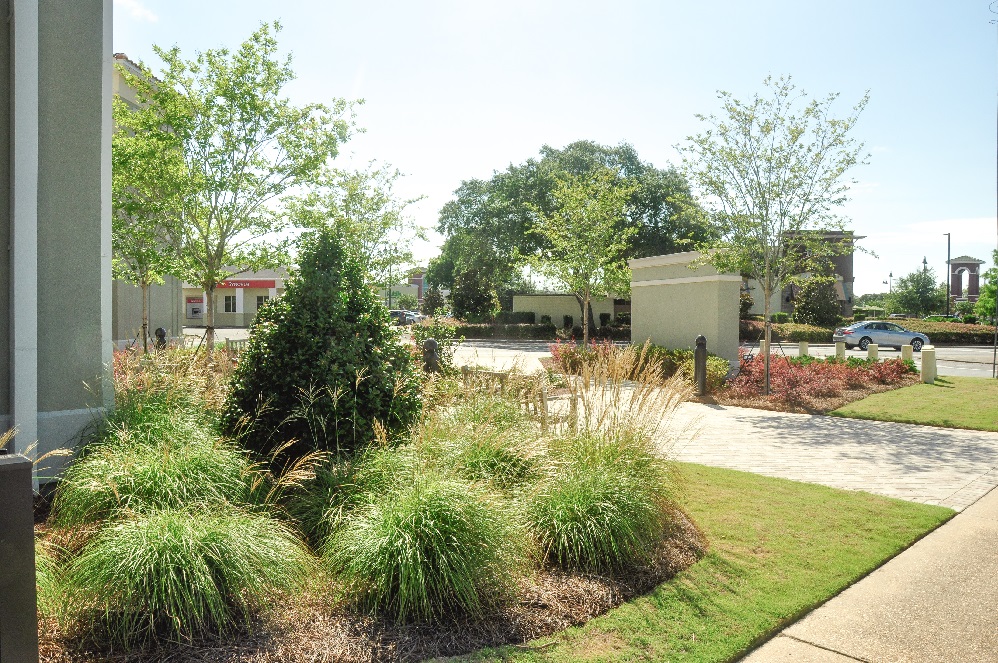Golfweek Features Jerry Pate Design and Teeth of the Dog - Read More
Golfweek Features Jerry Pate Design and Teeth of the Dog - Read More

How Hospital Landscaping Can Help Patients
Hospital landscaping is nothing new, however, it has experienced a resurgence as the benefits of natural spaces are proven in studies. Here’s how landscaping can help patients:
One of our favorite things about landscape architecture is that it can truly be used to make a positive impact on people.
If you’re in any field of healthcare, often what happens to the outside of the building is far from the top of the priority list. However, some studies have shown that landscaping does matter. In fact, it can play an important role in achieving better outcomes for patients by providing them with an attractive outdoor space.
This isn’t a new concept. Until the 1940s, tuberculosis patients were sent to the mountains or the seaside with the express purpose of getting fresh air. In fact, for millennia, good health and time spent outdoors have been linked.
The bottom line is that by including purposeful landscape architecture at your hospital or healthcare facility, you’re doing something good for patients and staff. Let’s take a closer look:
Download Here: Tips for hospital landscaping
Effects of natural spaces on health
It used to be that we assumed hospitals were noisy, industrial and often stressful places. They were built for utility after all, as spaces devoted to caring for the sick. As Esther Sternberg, author and physician, said in her book Healing Spaces: The Science of Place and Well-Being, “it hadn’t occurred to us that stress could affect a patient’s healing—or that we could do anything about that.” That is, until a 1984 study published in Science by environmental psychologist Roger Ulrich.
The study used strict controls to help demonstrate that gazing at a garden can sometimes help to speed healing from surgery and ailments. They followed patients recovering from gallbladder surgery and found that, when all other things were equal, those with bedside windows that looked out into leafy trees healed a day faster, required less pain medication and had fewer post-surgical complications than those who only had a view of a brick wall.
One thing that is interesting about this study and some follow-up studies that found similar results is that the patients didn’t actually have to be out among the trees, they just had to be able to see them. When we look at studies that record the effects of going outside in nature on people, we find many other benefits.
For example, many physicians are now prescribing outdoor time for their stressed, sick or sedentary patients. Time spent outdoors has been shown to help lower blood pressure, reduce stress levels, bolster immune function, reduce inflammation and improve mood, among other benefits. All of these things directly impact physical and mental health and the overall ability for a patient to heal.
Sadly, time spent in healing natural spaces has waned considerably for many people, with more and more indoor time becoming the norm. Pediatrician Robert Zarr was quoted in a recent article for Outside magazine:
“‘We are starting to think about nature not just as a place to recreate, but also as a social determinant of health.’ There’s no diagnostic code for nature-deficit disorder—the term coined by Richard Louv in his 2008 book Last Child in the Woods—but if there were, Zarr says, ‘I would use it a lot.’”
In the case of hospitals, it’s a matter of creating those spaces where patients can enjoy nature as part of their recovery. These can be indoors, outdoors on rooftops or anywhere that is accessible to patients. We can encompass places like care homes for the elderly in here too – accessibility to these landscaped places can bolster the overall health and well-being of residents.

Creating healing spaces
It’s an interesting evolution – back in the 19th century and even earlier, it was common for hospitals and sanatoriums to include gardens and natural healing spaces. However, as science advanced in healthcare, less space was given to landscaping, to the point where some hospitals made no room for garden space.
A resurgence of interest in the healing benefits of nature has prompted many hospitals to re-evaluate and consider how they might create restorative environments for patients. Sometimes there isn’t a lot of space to work with, but in our experience, there is always something that can be done.
Gardens might have to be created indoors, such as in lobbies or atriums. They could go onto the rooftop, such as St. Louis Children’s Hospital’s seventh and eighth-floor gardens, which are actively used as therapy spaces for patients. Landscaping might also be done around entry areas, such as the example shown below of a project we completed for Sacred Heart Pediatric Care Center in Gulf Breeze, Florida.

Garden designs might be for aesthetic as well as more practical purposes. Some hospitals have incorporated edible gardens, for example, where the fruit, vegetables and herbs produced can go into fresh patient meals.
Hospital staff well-being might be another consideration for landscaping. For example, at Rush University Medical Center in Chicago, a rooftop garden has been created for employees to de-stress and enjoy the space. When you consider how many staff may work long shifts with little chance to head out into natural spaces, this makes a lot of sense from a health and wellness perspective.
Landscaping and hospital users
The patient is generally at the center of hospital landscaping decision-making, but as studies point out, there are other stakeholders to consider. We mentioned hospital staff previously – researchers have found that access to hospital gardens can not only help to decrease their stress levels, but to improve their productivity.
Other stakeholders might include nearby community members or friends and family who spend time visiting patients. When designing landscaping, it’s important to consider what they hope to get from the space too. For example, some people may hope to take time out to decompress when dealing with a stressful family situation. Some may want to take their patient to the space and be part of their healing process.
In some cases, the landscaping can encourage people to visit and spend time with patients. This adds to the positive benefits for patients. Many hospitals are recognizing the importance of patient and family-centered care (PFCC) and are incorporating these practices into their policies and procedures. Creating healing spaces to bring people together can form a useful part of PFCC.
Download Here: Tips for hospital landscaping
Final thoughts
We know that as landscape architects, we love being outdoors and deliberately seek every opportunity to do so. It wasn’t really a surprise to learn that true health benefits have been linked with natural spaces.
For hospitals and other healthcare providers, landscaping can provide an important link with nature that is often missing in sterile indoor environments. Even just having a view of trees can help patients to feel better both physically and mentally.
We’ve come full circle in terms of what is prioritized for hospital space. It’s time to head back and enjoy the benefits that natural spaces have to offer.